- Home
- Dante Alighieri
Dante's Lyric Poems (Italian Poetry in Translation) Page 3
Dante's Lyric Poems (Italian Poetry in Translation) Read online
Page 3
Barbi’s multiply-subdivided and rather cluttered index, informed by a nineteenth-century positivist spirit, seems rather antiquated to us, above all if it is compared to the slender alphabetical list of texts devised by Contini, whose index emanates a modernist purity: the lack of subdivisions, the change from roman numerals to arabic ones, and the general concision of the volume combine to create a format that even typographically announces itself as new and modern. To understand the enormous impact of Contini’s work we must recall that when it came out, first in 1939 and then in 1946, Barbi-Maggini’s and Barbi-Pernicone’s volumes had not yet been published, with the result that Barbi’s writings on Dante’s lyrics were fragmentary and had to be consulted piecemeal. Contini’s volume, with its fifty-four poems attributed to Dante, followed by twenty-six “Rime dubbie” (Doubtful rime), offered both texts and commentary in a single compact and elegant graphic-editorial product. Moreover, his commentary brings a new level of literary analysis and interpretation to a corpus that has been underinterpreted.
Contini follows Barbi’s sequence exactly, a fact that is not apparent from his index, which is alphabetical rather than chronological. But then, how is it that Contini’s volume contains only fifty-four poems? Recalling the eighty-eight poems of Barbi’s edition, of which thirty-four were lyrics that Dante had put in the Vita Nuova (thirty-one poems) and in the Convivio (three poems), we realize that it is precisely by omitting these thirty-four poems that Contini came to a total of fifty-four texts. Because of his exclusion of the Vita Nuova’s poems – Barbi’s book 1 – Contini begins his own edition with Barbi’s book 2: “Rime of the time of the Vita Nuova.” Thus, by eliminating the Vita Nuova poems, Contini is the first editor to begin his edition of the rime with Dante Alighieri’s poetic exchanges with Dante da Maiano, placed by Barbi at the start of his second section.
There is another chronological model, proposed by Foster-Boyde, which might be described as faithful on the one hand to Barbi’s inclusive spirit but updated, on the other hand, by Contini’s uncluttered approach in favour of doing away with subdivisions. The Foster-Boyde edition, which contains eighty-nine compositions rather than the eighty-eight of Barbi (the editors reverse, in my opinion not convincingly, the order of attribution of the five sonnets exchanged between Dante Alighieri and Dante da Maiano, thus assigning an extra sonnet to Alighieri),20 follows Barbi’s inclusive and chronological model. However, Foster-Boyde push further than Barbi in the application of his principles of inclusion and chronology, in a way that is bold and truly innovative: they are the first fully to integrate the poems of the Vita Nuova into the canon of Dante’s lyrics. The English edition of Foster-Boyde, rather than an Italian edition, is the first to include the poems from the Vita Nuova not in a separate block – as did the Giuntina and Barbi – but mixed in with the other poems, in a move that lends further depth and rigour to the tracing of Dante’s chronological and stylistic progression.
We must always remember, however, not to reify any editorial order of the rime, for none is authorial: none is Dante’s.
De Robertis’ Edition
De Robertis’ massive critical edition of 2002 is truly anomalous with respect to the modern tradition, because he rejects altogether the chronological criterion for order that became visible in the sixteenth-century Giuntina and that dominates the great twentieth-century editions. De Robertis chooses a radically different criterion from the one chosen by previous editors; he chooses to follow where possible the traces of the editorial history that he tracked so assiduously in his decades of manuscript review. In other words, as an ordering principle for his edition he substitutes the history of the transmission of the poems for the history of Dante’s development as a poet.
De Robertis outlines the two choices that confront an editor of the rime – the choice of attempting to follow in Dante’s footsteps or the choice of following in the footsteps of previous editors – and he chooses to follow the editors: “Either we trace the history of Dante’s work as a poet, the history that the Vita Nova adumbrates and that the nineteeth and twentieth centuries worked to recover; or we propose a form, a form that the manuscript tradition, the tradition of the text of Dante’s lyrics, has gradually coagulated and seems to authorize … with the secret hope, perhaps, that the tradition reflects the history of the poet’s work or will restore (betray) his own principle of organization” (Introduzione, 2:1144). De Robertis’ edition therefore chooses to reject the attempt to reconstruct “the history of Dante’s work as a poet” and offers us instead “the tradition of the text of Dante’s lyrics,” in the “secret hope” that this second course of investigation will ultimately lead us to the first.21
The ordering of the lyrics that results from this methodological choice is one that grafts the Giuntina onto Boccaccio’s transcription of the canzoni distese. De Robertis’ order opens with the canzoni: first the fifteen canzoni distese copied by Boccaccio, then the canzone not copied by Boccaccio (Lo doloroso amor), then the incipit of the lost canzone mentioned in De vulgari eloquentia (Trag[g]emi de la mente), and finally the trilingual descort that De Robertis reattributes to Dante (Aï faus ris).22 After the canzoni, De Robertis passes to the other lyrics, the sonnets and ballate.
De Robertis’ order preserves the Giuntina’s partitions by genre, while reversing the Giuntina’s sequence: we recall that in the Giuntina book 2 consists mainly of sonnets and ballate, while books 3 and 4 are dedicated to canzoni. De Robertis rejects the Giuntina’s partial adoption of a thematic criterion of organization for the canzoni (“canzoni morali” versus “canzoni amorose”), instead keeping intact the Boccaccian canon of the fifteen canzoni distese.
De Robertis reassigns to Dante a certain number of those compositions that Barbi had placed among the lyrics of doubtful attribution (“Rime dubbie”). As we have seen, Barbi assigns a total of eighty-eight compositions to Dante, including the thirty-one of the Vita Nuova and the three of the Convivio; he places twenty-six more lyrics in the category of lyrics of uncertain attribution. In contrast, De Robertis’ edition has seventy-nine poems attributed to Dante and sixteen of uncertain attribution. Starting with Barbi’s total of eighty-eight poems, I have reconstructed De Robertis’ unexplained total of seventy-nine rime, which is obtained as follows: (1) by subtracting the thirty-one Vita Nuova poems from eighty-eight, he reaches a total of fifty-seven; (2) by adding back fourteen Vita Nuova poems to the base of fifty-seven, he gets a new total of seventy-one; (3) by adding to these seventy-one the eight uncertain lyrics that he restores to Dante, De Robertis reaches a final total of seventy-nine.
The Vita Nuova poems De Robertis includes in his edition are the thirteen that exist materially in a redaction that precedes the Vita Nuova, plus the first sonnet A ciascun’alma (for which he makes an exception that he does not explain). In other words, with regard to the poems of the Vita Nuova, De Robertis imposes a criterion of selection that is based on the vicissitudes of historical transmission: if the redaction of the Vita Nuova is the first redaction of a poem that happens to have materially survived, if it is the first transmitted by history, then the poem is not included in his edition.23 It thus occurs that De Robertis’ edition does not contain any of the canzoni in the Vita Nuova, and that the critical edition of Dante’s rime sanctioned by the Società Dantesca Italiana ends up including the trilingual canzone Aï faus ris, “restored to Dante” by De Robertis, while excluding Donne ch’avete intelletto d’amore, Dante’s favorite canzone, whose paternity has never been in question and whose separate codicological transmission as a poem presupposes an editorial history independent from that of the Vita Nuova.
The present commentary includes all lyrics attributable with certainty to Dante, thus embracing all thirty-one Vita Nuova poems. These are poems with respect to whose paternity there has never been any doubt.
De Robertis reduces the total number of poems of dubious attribution from twenty-six to sixteen, annexing eight compositions to the regular canon and eliminating two altog
ether (these two are Deh, piangi meco tu, dogliosa petra and Nulla mi parve più crudel cosa). The eight rime dubbie readmitted into the canon are Aï faus ris, Quando ’l consiglio degli ucce’ si tenne, Amore e monna Lagia e Guido ed io, Se ’l viso mio a la terra si china, Questa donna ch’andar mi fa pensoso, Non v’accorgete voi d’un che·ssi more, Io sento pianger l’anima nel core, and Degli occhi di quella gentil mia dama.24
De Robertis turns to the “documenti antichi” – the manuscripts – through which he hopes to recreate the authentically fragmented and resistant-to-interpretation Duecento experience, as compared to the “organic” Petrarchan collection with its invitation to interpretation. The underlying credo of his edition is in this sense anti-Petrarchan, in that he is committed to opposing what he views as an anachronistic Petrarchan solution to the ordering of lyric poems. The irony of De Robertis’ edition is that the eminent editor and philologist puts so much effort into resisting the interpretation that is willy-nilly implicit in any editor’s order. He thinks to eschew interpretation by turning to Boccaccio instead of making an order of his own.
Nonetheless, as noted earlier, there is interpretation – and of a most imprudent sort – built into De Robertis’ edition, because he nurtures the “secret hope,” picked up and made no longer “secret” by his disciples, that Boccaccio’s ordering of the canzoni distese is indeed Dante’s and that it represents Dante’s own “libro delle canzoni.” And there are other cases of unwarranted interpretive licence in De Robertis’ edition: examples include his choice of “Lippo” over “Lapo” in Guido, i’ vorrei, for which he gives no strong philological rationale (see the introductory essay), his lack of transparency in his handling of the dubbie (see the introductory essay to Amore e monna Lagia e Guido ed io), and his unphilological privileging of allegorical “Licenza” over historicized “Lisetta” in Per quella via che la Bellezza corre (see the introductory essay).
We need to bear in mind that interpretation is implicit in any order, Boccaccio’s as much as Barbi’s. Any editorial order – no matter how ancient – will reify a hermeneusis that is not Dante’s.
Interestingly, the most recent Italian commentary on the rime, by the philologist Claudio Giunta, does not retain De Robertis’ painstakingly “philological” order. Giunta follows Barbi’s order while omitting the poems of the Vita Nuova and Convivio, so that in effect his edition replicates the order of Contini.25
The Question of Order and Dante’s Implicit Poetry Collections
Every editor of Dante’s lyrics must tackle the problem of the order. Although the poetic tradition of which Dante is heir boasts short sonnet groupings by authors like Guittone and Monte Andrea (these groupings, known as corone of sonnets, are organized by thematic topics such as the virtues and vices or a dramatic enactment of a dialogue between a lover and his lady), Dante himself never organized his poems into such a mini-collection. He did, however, create what I call “implicit poetry collections.” I am referring to the collections that Dante created in his hybrid texts, his texts that are mixtures of prose and of poetry. These are texts in which the poetry was written before the prose and was later set within the prose: the Vita Nuova and the Convivio. Given that the Commedia contains three autocitations by Dante of the first verses of three of his canzoni, I will add the Commedia to this list of implicit poetry collections.26
The diegesis of the Vita Nuova self-identifies as autobiographical and chronological. The Vita Nuova narrates a story that is declared to be autobiographical and that is presented as chronological: the ordering of the story, and so of the poems that serve the story, is defined as chronological by the author. Whether or not the chronology is accurate is in this context not the point. The important point for our purposes here is that from the Vita Nuova we can deduce Dante’s interest in the idea of a chronological ordering of his lyrics. In fact, De Robertis’ decision to adapt Dante’s lyrics to the conventional ordering of Duecento and Trecento canzonieri, in which the canzoni are placed first, should be scrutinized in the context of the innovations for which Dante is so well known. We know that Dante was not tied to the model of the conventional canzoniere, in which the canzoni are placed first, because he unveils in the Vita Nuova what is effectively a new kind of Duecento canzoniere: one in which the poems are presented as though in chronological order. Moreover, in the Vita Nuova Dante spearheads another innovation along with chronological order: he does not hesitate to desegregate the various lyrical genres, placing sonnets and even one ballata before the first canzone. In the Vita Nuova Dante thus reveals a lyric sequence in nuce, a lyric sequence however still hemmed in and guarded by the prose frame. What he leaves as a seed later blossomed in the hands of Petrarch, who arrived at the solution of the Rerum vulgarium fragmenta – the fully realized canzoniere form – by abandoning the prose frame of the Vita Nuova and by retaining the idea of an order for the lyrics that is meaningful in and of itself. In the Rerum vulgarium fragmenta the lyrical genres are desegregated and mixed together – as in the Vita Nuova – and the poet arranges his lyrics in a sequence according to a method devised to exploit the idea of chronological succession.27
The Convivio presents an entirely different situation: the lyrical genres are not mixed, as only canzoni are present, and the ordering is not chronological but thematic.
In the philosophical treatise Dante uses his canzoni as pre-texts and points of departure for a philosophical discourse in prose. After the first, introductory book, the remaining three books of the Convivio all begin with a canzone, whose interpretation launches the encyclopedic and philosophical material of the treatise. In books 2 and 3 of the Convivio the relationship between the canzoni and the prose they launch is far from straightforward, for the poems Voi che ’ntendendo and Amor che nella mente are love poems. (Placement in the Convivio has generated ambiguity about their status; we saw that the editors of the Giuntina labelled all the Convivio poems “Canzoni morali.”) To refashion the canzoni Voi che ’ntendendo and Amor che nella mente as the starting points for philosophical discourse requires allegorical interpretation. But in book 4 of the Convivio the canzone and the prose converge, since Le dolci rime is philosophy in verse: the canzone Le dolci rime treats a moral topic, that of nobility, and so does not require an allegorical reading in order to lend itself to a philosophical discussion of the same topic in the prose.
The ordering of the canzoni in the Convivio is explicitly tied to the philosophical themes of the treatise. From what can be surmised from the presence of only three canzoni in an unfinished text of only four extant books (of the fifteen that were planned), the ordering is not so much chronological as it is thematic (there is an autobiographical element in the Convivio, but it quickly fades in the first books). Thus, the order chosen for the canzoni of the Convivio would have had to reflect a process of selection dictated by the thematic need to fit the canzoni to the varying philosophical subjects of the treatise.
Dante states that the Convivio would include and comment upon fourteen canzoni: “La vivanda di questo convivio sarà di quattordici maniere ordinata, cioè quattordici canzoni sì d’amor come di vertù materiate [The food of this banquet will be prepared in fourteen ways: that is, in fourteen canzoni, whose subject is both love as well as virtue]” (Conv. 1.1.14).28 The text that we have contains, as we just noted, only three canzoni, two “d’amor” and one “di vertù materiat[a].” The books that are absent but explicitly announced have led to centuries of speculation on the identity of the other canzoni that the Convivio would have included. I use the term “speculation” rather than “reconstruction” because the absent books of the Convivio, never having been written, cannot be reconstructed.
The speculation about the other eleven canzoni that have been imagined as already chosen and destined for the unwritten books of the Convivio is the node at which the reception of the Convivio overlaps with that of the rime. This speculation has traditionally been focused on the fifteen canzoni distese copied by Boccaccio, the more so because the th
ree canzoni of the existing books of the Convivio – namely Voi che ’ntendendo, Amor che nella mente, and Le dolci rime – form a compact group at the beginning of Boccaccio’s anthology (preceded only by Così nel mio parlar vogli’esser aspro). This line of argument first took material form in a marginal note of Antonio di Tuccio Manetti in his copy of the Convivio, today in MS Riccardiano 1044, a work Manetti transcribed between 1460 and 1470. Beginning with Voi che ’ntendendo, Manetti proposes as the fourteen canzoni of the Convivio a list that corresponds to Boccaccio’s canzoni distese minus Boccaccio’s number one, Così nel mio parlar.29

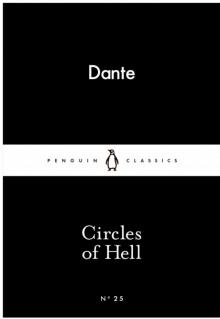 Circles of Hell
Circles of Hell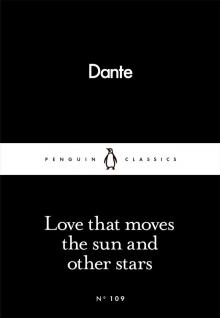 Love That Moves the Sun and Other Stars
Love That Moves the Sun and Other Stars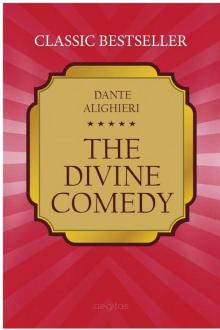 The Divine Comedy
The Divine Comedy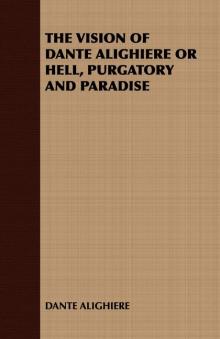 The Vision of Dante Alighiere or Hell, Purgatory and Paradise
The Vision of Dante Alighiere or Hell, Purgatory and Paradise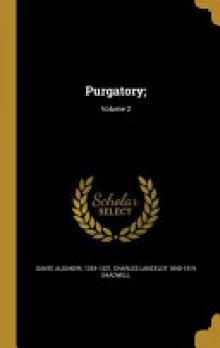 Purgatory
Purgatory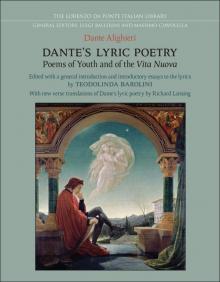 Dante's Lyric Poems (Italian Poetry in Translation)
Dante's Lyric Poems (Italian Poetry in Translation)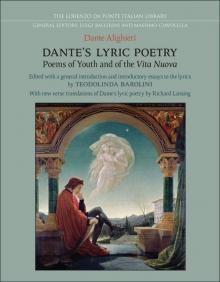 Dante's Lyric Poetry: Poems of Youth and of the 'Vita Nuova'
Dante's Lyric Poetry: Poems of Youth and of the 'Vita Nuova'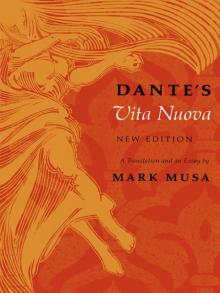 Dante’s Vita Nuova, New Edition: A Translation and an Essay
Dante’s Vita Nuova, New Edition: A Translation and an Essay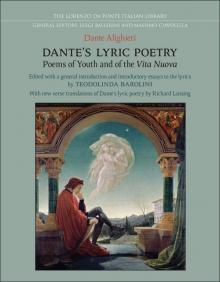 Dante's Lyric Poetry
Dante's Lyric Poetry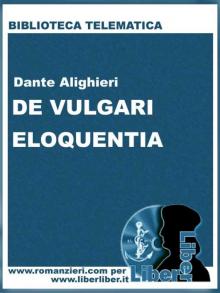 De vulgari eloquentia
De vulgari eloquentia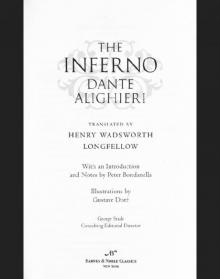 The Inferno (Barnes & Noble Classics Series)
The Inferno (Barnes & Noble Classics Series)